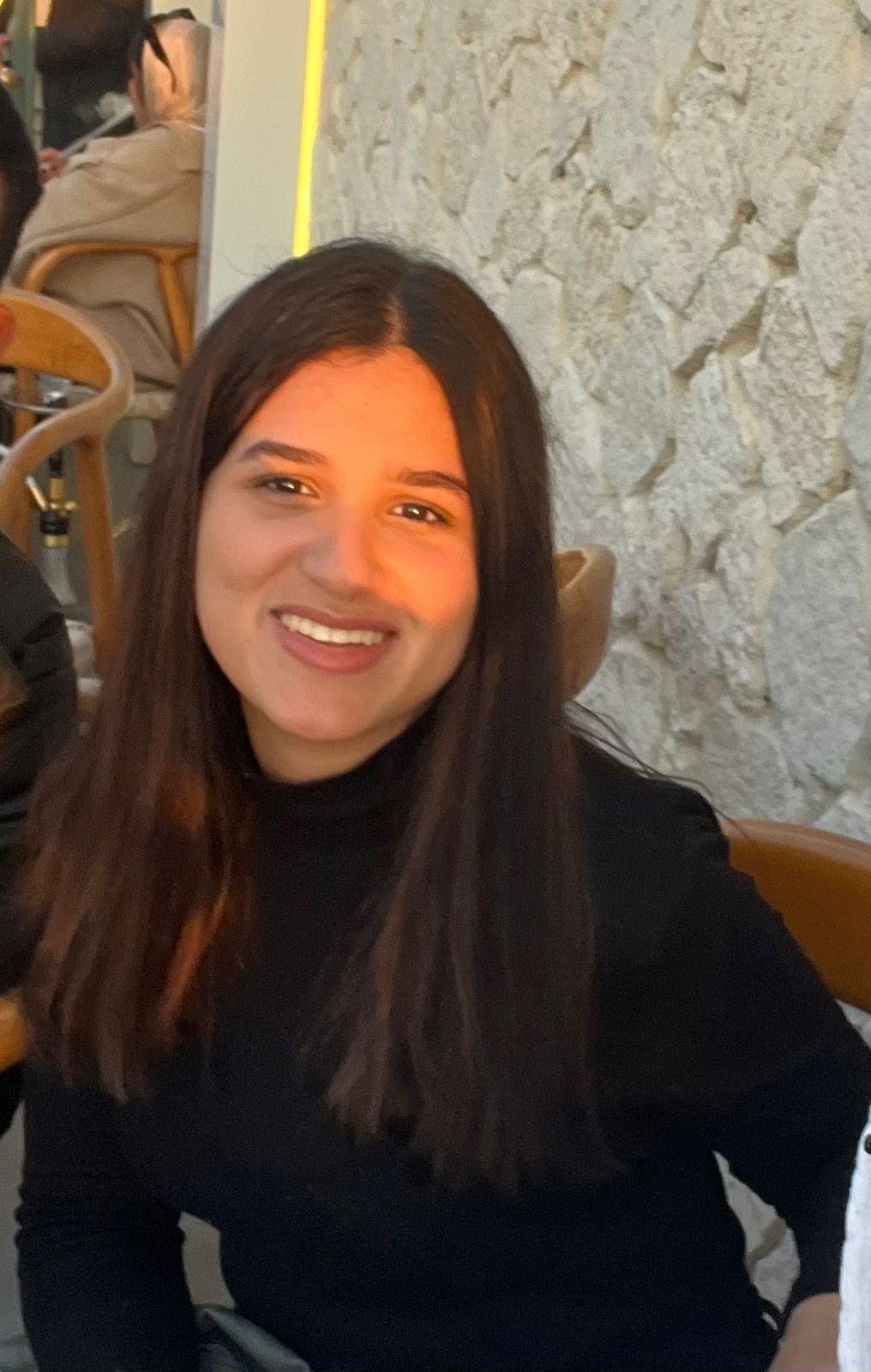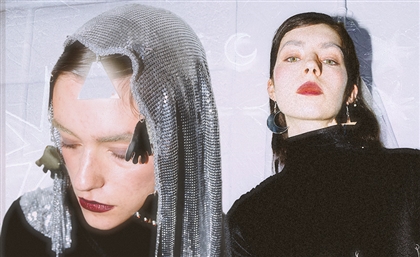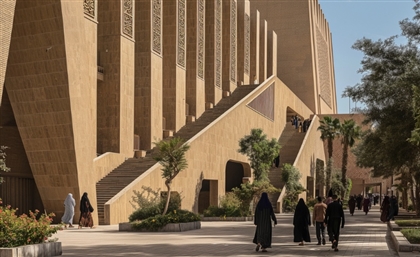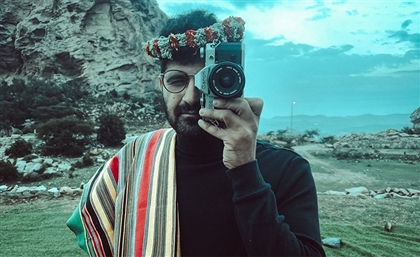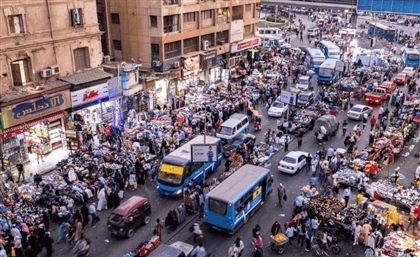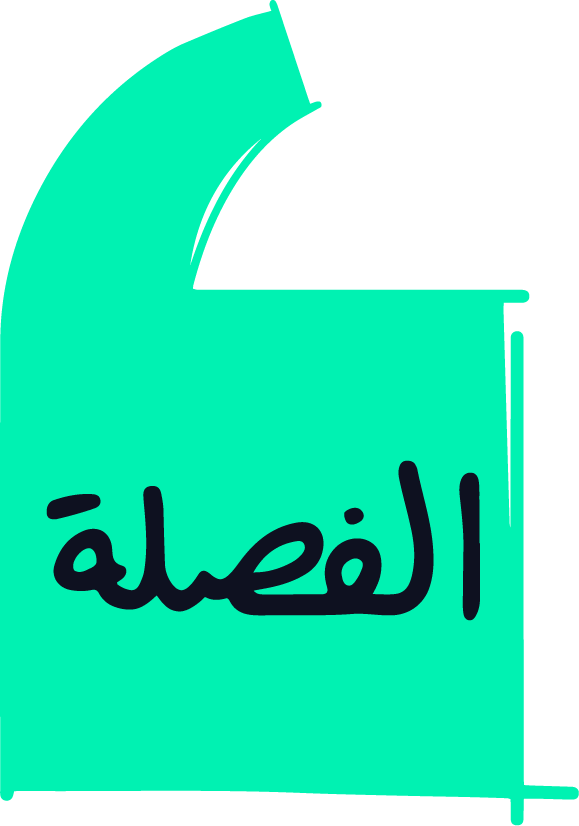Ruaa El Mansuri is Rewriting Fairy Tales Through Fashion
Libyan-British Desinger Ruaa El Mansuri's designs perform a delicate sorcery: razor-sharp corsets harnessed to diaphanous veils, Edwardian silhouettes spliced with Amazigh motifs.
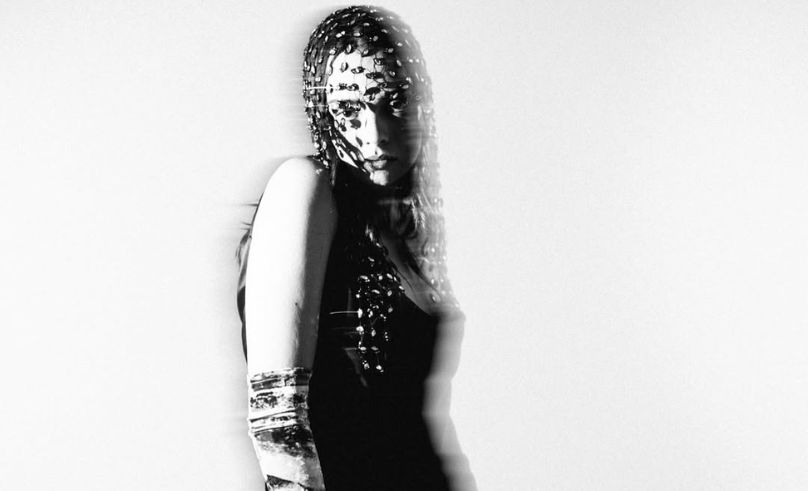
For Libyan-British designer Ruaa El Mansuri, every thread pulled is a thread recovered - whether from childhood memories or colonial museums, whether from her mother’s woven cloth or the saturated frame of a Sofia Coppola film.
When she first graduated from Central Saint Martins’ MRes Art programme, she left with a degree and an unresolved question: How do you dress forgotten histories? That autumn, stitching fragments of Libyan heritage onto toile prototypes in a Poplar Studio, her brand took its first breath. Two years on, her studio shelves groan under silk rolls and historical monographs- a physical archive of her mission to “showcase untold stories through cloth.”
El Mansuri’s eponymous label is a meticulous resurrection of obscured narratives. Childhood memories of her grandmother’s loom in Libya collide with academic rigour, transforming into wearable palimpsests. “Traditional Libyan garments were reserved for sacred moments," impossibly ornate, almost too potent for daily life," El Mansuri says. "What if we carried that ceremonial magic everywhere?"-30569ee2-da1c-4c93-a6c3-3d6b48b51934.jpg) Her designs perform a delicate sorcery: razor-sharp corsets harnessed to diaphanous veils, Edwardian silhouettes spliced with Amazigh motifs. "I obsess over duality," she explains. "Structure roots you. Sheer layers let you dissolve." This tension manifests in her archival pieces- a black-and-white ensemble evokes a "desert queen meeting her shadow self," while the Barbiecore capsule (2024) deploys psychedelic silks like candy-coloured armour.
Her designs perform a delicate sorcery: razor-sharp corsets harnessed to diaphanous veils, Edwardian silhouettes spliced with Amazigh motifs. "I obsess over duality," she explains. "Structure roots you. Sheer layers let you dissolve." This tension manifests in her archival pieces- a black-and-white ensemble evokes a "desert queen meeting her shadow self," while the Barbiecore capsule (2024) deploys psychedelic silks like candy-coloured armour.
El Mansuri builds emotional universes spun from deadstock lace, family textiles and shimmering digital prints, and binds them with silhouettes sharp enough to command silence. “I always think of the feeling of the final product first,” she says. “What world does it live in?”
Her worlds are layered. A shimmering pink veil hints at Barbie’s artifice, only to fold into hand-pleated sorrow. A corseted gown bristles with Regency-era symmetry, but its hood - looming and protective - feels ancestral. “I’m interested in the symbolism of garments,” she says, “especially in occasion wear across cultures. How something can be delicate and strong, how a veil can be soft but also a shield.”-e91de97b-bea2-4f2c-b006-941f0e2e612d.jpg) El Mansuri’s process is part historian, part magician. Her research spans galleries and folklore, fairy tales and fashion archives. A typical project begins with a historical or emotional seed, often something overlooked. For her thesis at Central Saint Martins, she explored looted North African artefacts and how their display distorts their meaning. That spirit of reclamation carries into her studio. “Even when I’m designing something new,” she says, “I’m thinking about what has been erased. How do I tell that story in a different way?”
El Mansuri’s process is part historian, part magician. Her research spans galleries and folklore, fairy tales and fashion archives. A typical project begins with a historical or emotional seed, often something overlooked. For her thesis at Central Saint Martins, she explored looted North African artefacts and how their display distorts their meaning. That spirit of reclamation carries into her studio. “Even when I’m designing something new,” she says, “I’m thinking about what has been erased. How do I tell that story in a different way?”
Sketching by hand, then rendering digitally, she lets the story guide the form, whether it becomes a diaphanous glove or a structured architectural hood. Her collaborations with jewellers, metalworkers and embroidery studios often bring texture to her narratives. In one standout piece - a hooded corset dress - El Mansuri fused traditional Libyan silhouettes with sculptural rigour, layering ghostly sheers over boned structure.
If her earlier collections flirted with fairytale whimsy -Barbiecore’s candy-pink prints and the ‘Once Upon a Dream’ line’s ethereal florals - her current work feels more charged. “I’m trying to create garments that carry weight,” El Mansuri says. “Not in a heavy way, but with presence. Something that stays with you after it’s gone.”-3be8e014-a403-4279-be49-0f07e67fc476.jpg) Photography, for her, is part of the spell. Campaigns oscillate between dreamlike and defiant - blood-red backdrops, cinematic shadows, or soft dawn light over tulle. “Images give my work another kind of voice,” El Mansuri says. “I want to create a world, not just a garment.”
Photography, for her, is part of the spell. Campaigns oscillate between dreamlike and defiant - blood-red backdrops, cinematic shadows, or soft dawn light over tulle. “Images give my work another kind of voice,” El Mansuri says. “I want to create a world, not just a garment.”
There is an urgency, too, in her materials. Ruaa often uses deadstock fabrics, repurposes studio scraps, and works with digital sublimation printing to minimise waste. “Sustainability is It’s also about storytelling. About creating something meaningful enough that someone wants to keep it, cherish it, pass it down.”
It’s no surprise that she dreams of showing at the V&A, or one day exhibiting in a Tripoli museum, closing the loop between her diasporic longing and her cultural archive. In the meantime, she’s focused on her first runway collection, select pieces are available through her website, with a focus on expanding into retail across London, North Africa and the Middle East, and pushing her visual storytelling through campaign films and editorial partnerships.
- Previous Article Egypt’s Biggest Feteera Roll Weighs Over 2.5 Kilos
- Next Article Six Unexpected Natural Wonders to Explore in Egypt
Trending This Week
-
Dec 23, 2025







